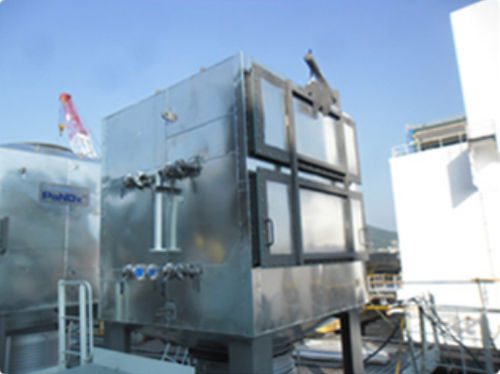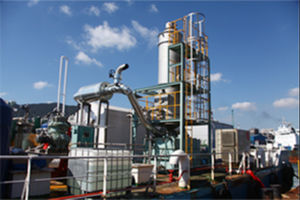
- Products
- Catalogs
- News & Trends
- Exhibitions
NOx selective catalytic reduction system PaNOx™for shipsSCR





Add to favorites
Compare this product
Characteristics
- Options
- NOx, for ships, SCR
Description
The International Maritime Organization (IMO) plans to bring into effect agreement TierIII on January 1, 2016 that will make it mandatory to reduce nitrogen oxides emitting from diesel engines by 80%.
To obtain this certificate, you have to equip your TierII-certified marine engine with an SCR system so that it can meet TierIII criteria.
Panasia's SCR flue gas De-NOx system PaNOx™ Marine adopted the Selective Catalytic Reduction (SCR) method and therefore is environment-friendly equipment that decomposes NOx present in flue gas into harmless H2O and N2 by making the NOx chemically react with a reducing agent at a catalyst layer and then discharges them to the air.
Recently, an engine equipped with PaNOx™ Marine has acquired from KR (Korean Register) internationally recognized certificate 'TierⅢEIAPP Certificate' for the first time in Korea. Moreover, in 2013, Panasia supplied PaNOx™ Marine for the engine equipped in Norwegian company Seadrill's drill ship, which was built by Samsung Heavy Industries.
Following that, Panasia also supplied this system for a Floating Storage Unit by Statoil, a Norwegian company that meets Norwegian government standard 'NORSOK standard I-001'. These achievements played a major role in helping Panasia — as the first Korean supplier to have been issued Scheme B certificate — to build customers' trust through satisfying them with the perfect performance of Panasia products.
VIDEO
*Prices are pre-tax. They exclude delivery charges and customs duties and do not include additional charges for installation or activation options. Prices are indicative only and may vary by country, with changes to the cost of raw materials and exchange rates.


